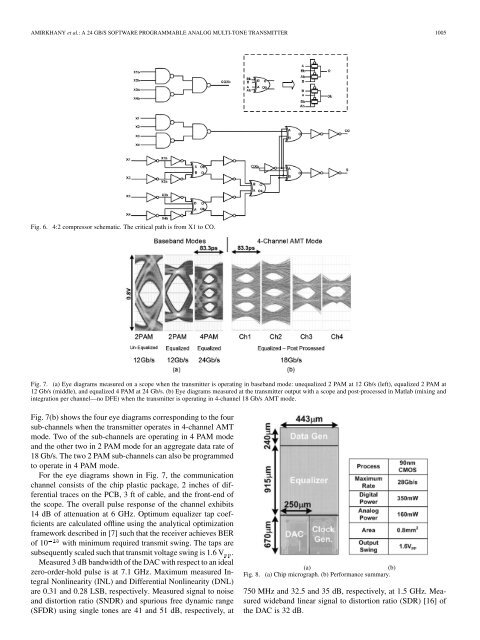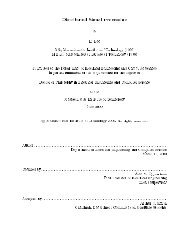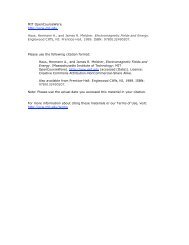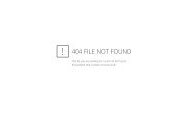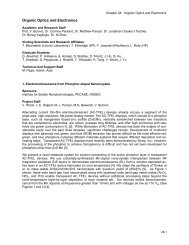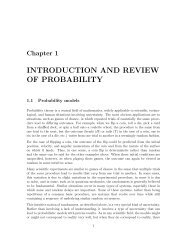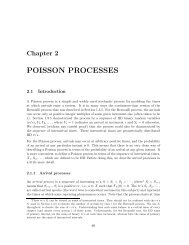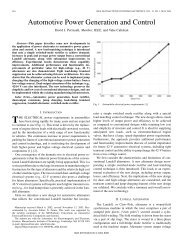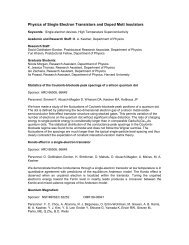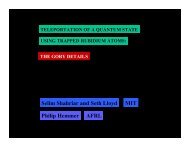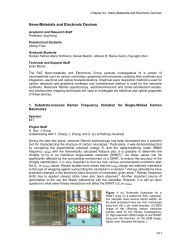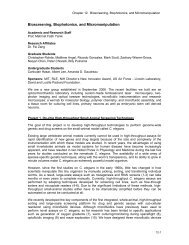A 24 Gb/s Software Programmable Analog Multi-Tone - Research ...
A 24 Gb/s Software Programmable Analog Multi-Tone - Research ...
A 24 Gb/s Software Programmable Analog Multi-Tone - Research ...
Create successful ePaper yourself
Turn your PDF publications into a flip-book with our unique Google optimized e-Paper software.
AMIRKHANY et al.: A <strong>24</strong> GB/S SOFTWARE PROGRAMMABLE ANALOG MULTI-TONE TRANSMITTER 1005<br />
Fig. 6. 4:2 compressor schematic. The critical path is from X1 to CO.<br />
Fig. 7. (a) Eye diagrams measured on a scope when the transmitter is operating in baseband mode: unequalized 2 PAM at 12 <strong>Gb</strong>/s (left), equalized 2 PAM at<br />
12 <strong>Gb</strong>/s (middle), and equalized 4 PAM at <strong>24</strong> <strong>Gb</strong>/s. (b) Eye diagrams measured at the transmitter output with a scope and post-processed in Matlab (mixing and<br />
integration per channel—no DFE) when the transmitter is operating in 4-channel 18 <strong>Gb</strong>/s AMT mode.<br />
Fig. 7(b) shows the four eye diagrams corresponding to the four<br />
sub-channels when the transmitter operates in 4-channel AMT<br />
mode. Two of the sub-channels are operating in 4 PAM mode<br />
and the other two in 2 PAM mode for an aggregate data rate of<br />
18 <strong>Gb</strong>/s. The two 2 PAM sub-channels can also be programmed<br />
to operate in 4 PAM mode.<br />
For the eye diagrams shown in Fig. 7, the communication<br />
channel consists of the chip plastic package, 2 inches of differential<br />
traces on the PCB, 3 ft of cable, and the front-end of<br />
the scope. The overall pulse response of the channel exhibits<br />
14 dB of attenuation at 6 GHz. Optimum equalizer tap coefficients<br />
are calculated offline using the analytical optimization<br />
framework described in [7] such that the receiver achieves BER<br />
of 10 with minimum required transmit swing. The taps are<br />
subsequently scaled such that transmit voltage swing is 1.6 V .<br />
Measured 3 dB bandwidth of the DAC with respect to an ideal<br />
zero-order-hold pulse is at 7.1 GHz. Maximum measured Integral<br />
Nonlinearity (INL) and Differential Nonlinearity (DNL)<br />
are 0.31 and 0.28 LSB, respectively. Measured signal to noise<br />
and distortion ratio (SNDR) and spurious free dynamic range<br />
(SFDR) using single tones are 41 and 51 dB, respectively, at<br />
(a)<br />
(b)<br />
Fig. 8. (a) Chip micrograph. (b) Performance summary.<br />
750 MHz and 32.5 and 35 dB, respectively, at 1.5 GHz. Measured<br />
wideband linear signal to distortion ratio (SDR) [16] of<br />
the DAC is 32 dB.


